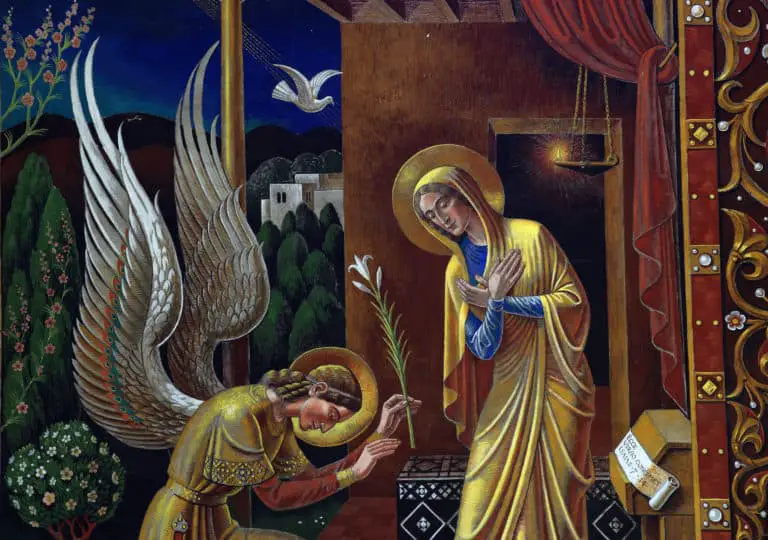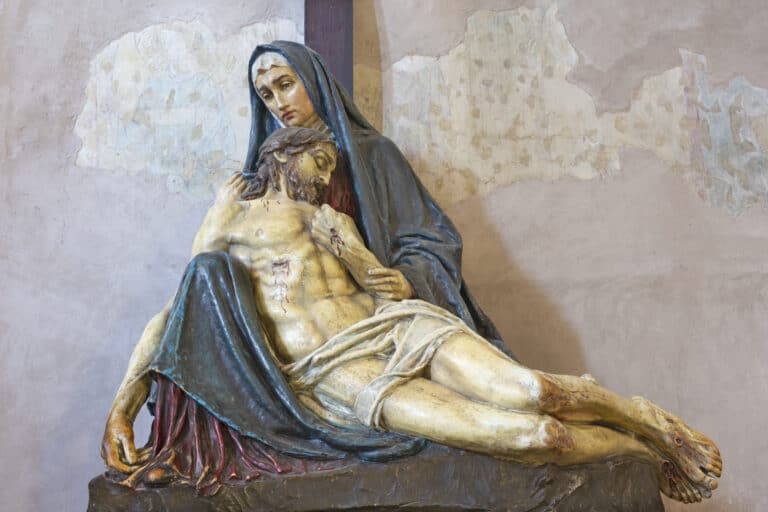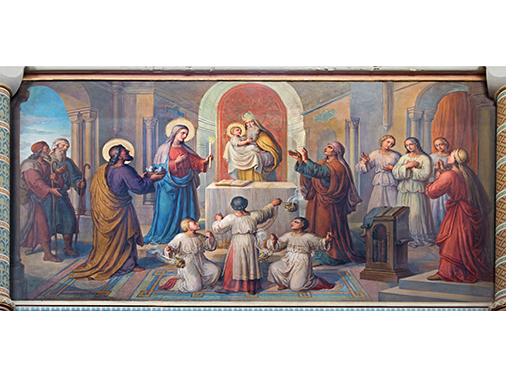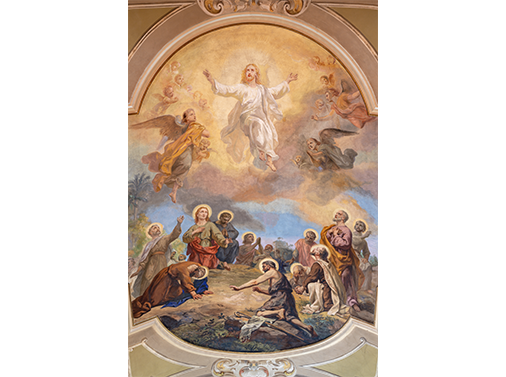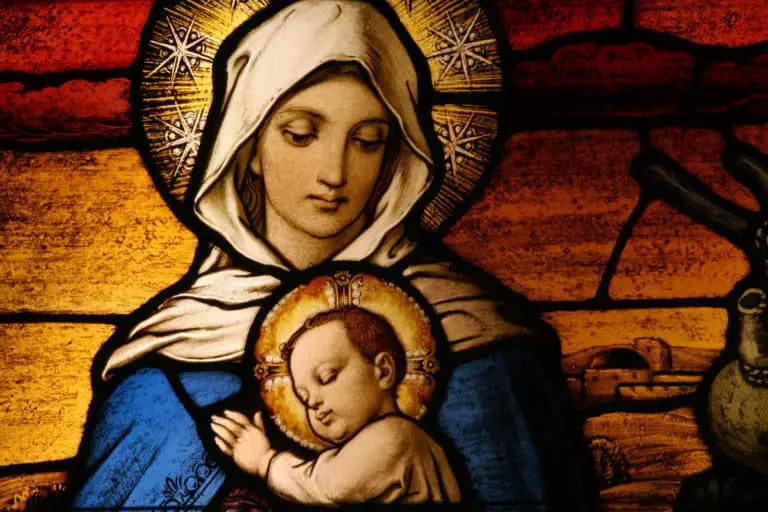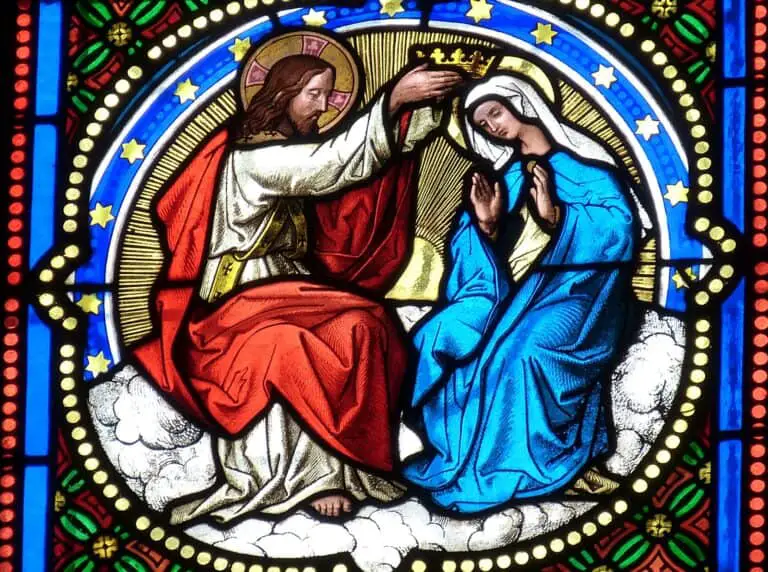What is meant by Mary’s Perpetual Virginity?
It is agreed by most Theologians and from the earliest teachings of the Church, that Mary remained a Virgin (St Luke 1:34) before and during the birth of Jesus. The conjecture amongst non-Catholic scholars is, did Mary remain a Virgin after the birth of Jesus?
The concept of ‘Perpetual Virgin’ in relation to Mary, following the birth of Jesus is understood that Mary remained unchanged or continuing forever (Perpetual) a Virgin. The Catholic position states that Mary was, is and ever will be a Virgin, hence the term and teaching of the Catholic Church. This is another Dogma (matter of faith) worthy of belief on Mary.
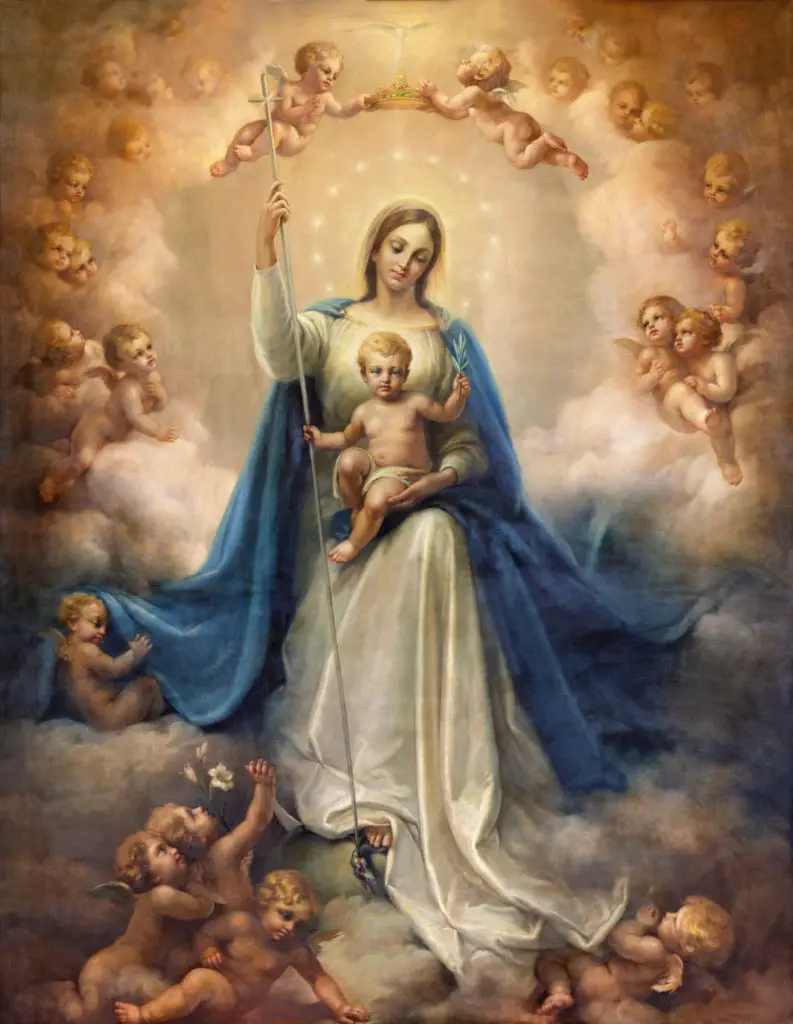
Helvidius a 4th Century Theologian denied the Perpetual Virginity of Mary by claiming that the mention of ‘brothers’ and ‘sisters’ in the Gospels is proof that Mary had relations with Joseph, her spouse.
St Jerome will lived in the same period and was summoned by Pope Damasus I to translate the Bible into Latin, hence the Latin Vulgate. A man of great scholarship and understood a number of languages including Latin, Hebrew, Greek amongst others. St Jerome attacked this position held by Helvidius by stating that those mentioned as the ‘brothers’ and ‘sisters’ of Jesus were His cousins. Therefore, maintaining and defending the Perpetual Virginity of Mary.
Did Mary have Jesus (the Virgin birth) and then begin relations with Joseph?
There is no doubt about the Virgin birth, firstly this is prophesised by the Prophet Isaiah:
“Behold, a Virgin shall conceive, and bear a son” (Isaiah 7:14).
Then the prophecy is fulfilled in (St Luke 1). However the conjecture is what happened after the Virgin birth? Did Mary have relations with Her spouse St Joseph, after all there are two key passages support the claim that Mary did have other children, but did she?
In the Gospel of St Matthew, we read the following:
“When Joseph woke from sleep, he did as the angel of the Lord commanded him; he took his wife, but knew her not until she had borne a son and he called his name Jesus. (St Matthew 1:18-25)
The passage says “… but knew her not until she had borne a son…”
The words ‘not until’ used in this passage implies that after some event something followed, however in this context it does not apply. It is just a manner of speaking.
There are several other examples in Scripture:
Example One:
Saint Jerome and Saint Chrysostom on this passage have shown by many examples.
“…teaching them to observe all that I have commanded you; and behold, I am with you always, to the close of the age “ (St Matthew 28:20).
This does not mean that He would not be present afterwards, but much more present.
Example Two:
In 2 Kings 6:23 we read “And Michal the daughter of Saul had no child to the day of her death”.
This does not imply that following her death, Michal had a child. It simply means that the event did not change.
Example Three:
“The Lord says to my Lord: Sit at my right hand, till I make your enemies your
footstool” (Psalm 109:1,2).
This once again that after the event, the Lord will not continue to sit at the right hand. It means he will continue even after the event.
These are some examples of how the words ‘till’, ‘until’ ‘before’, “before that” do
not mean an event took place afterwards.
In the same line and in other Bible translations the word ‘…she had born a son’ is stated as ‘… her first born’.
St. Jerome explains:
“Christ is called the first-born of Mary, not because there was another son after Him, but because before Him there had been none. For it is the custom of Scripture to call the only-born the first-born.
There are other examples of these expression of the Hebrew people.
In Exodus 4:22 God calls the people of Israel His first-born, as He had no others, and (12:29) He is said to have slain all the first-born of the land of Egypt; among these, beyond doubt, were many only-born; and (13:2; 22:29) He commanded all the first-born to be sanctified to Him, among whom were included the only-born, otherwise such must have been waited for until others were born afterwards. Therefore, we can conclude with confidence that Mary had only One Son, Jesus Christ, no other, and remained a Virgin before, during and after, till now and forever.
What about the ‘brothers’ and ‘sisters’ passage in St Matthew’s Gospel?
The Evangelist St Matthew writes:
“While he was still speaking to the people, behold, his mother and his brethren stood outside, asking to speak to him. But he replied to the man who told him, “Who is my mother, and who are my brethren?” And stretching out his hand toward his disciples, he said, “Here are my mother and my brethren! For whoever does the will of my Father in heaven is my brother, and sister, and mother.” (St Matthew 12:46-50)
And again ….
“Is not this the carpenter’s son? Is not his mother called Mary? And are not his brethren James and Joseph and Simon and Judas? And are not all his sisters with us? (St Matthew 13:55—56).
There you go, Jesus had other siblings and Mary is not a Virgin following the Virgin birth. This is often cited by Protestants and opponents to the Perpetual Virginity of Mary.
However, this point of view is erroneous and here’s why.
Some think the brethren of Jesus to have been the sons of Joseph and Mary born after the birth of Christ or even the children of St Joseph from a previous marriage.
St. Jerome, St Hilary and St Ambrose all make the same argument about this false claim.
They state that the cousins and kindred of Jesus were called His brothers, such as James the Less, Joses, Jude, and Simon.
It would appear that James and Joses were the sons of the sister of Mary the Virgin, who was also herself called Mary. However the Scriptures contradict this claim.
St. John the Evangelist calls Mary the daughter of Cleophas, and wife of Alphæus, the sister of the Mother of the Lord (19:25). But St. Matthew (27:56) and St. Mark (15:40) call the same Mary the mother of James the Less and Joses.
It may very well be the case that Mary was the sister-in-law of the Virgin Mary. In other words, St Joseph’s brother’s wife.
Is important to understand that cousins and kindred were often called ‘brothers’ and ‘sisters’, as the word ‘cousin’ does not exist in the vocabulary of the Hebrew people.
This can be shown in the following examples:
For Lot, whom Scripture states to have been the son of Aram, the brother of Abraham, was called the brother of Abraham (Genesis 13:8); and Laban, though he was the brother of the mother of Jacob (Genesis. 28:2), is called the brother of Jacob (Gen. 29:15).
In the same way, those from St Matthew’s Gospel are called brethren in the same way. Not as biological siblings but as relatives or cousins.
When Jesus’ Mother and brethren had arrived, Jesus states:
“Who is my brethren? Who is my Mother?”
Allegorically, Jesus also wished, to teach us all that each and everyone could be both His brother, sister and mother.
It is therefore important and crucial to examine Scripture it its’ context.
What are some Jewish idioms and expressions of these times?
If I were to say, “take your head out from the sand”, it doesn’t imply that the persons’ head was in the sand, it simply means to wake up and know what is going on.
By examining these passages in context, it becomes clear that these “brothers and sisters” are not other biological children of the Blessed Mother.
In remaining true to the Hebrew/Aramaic Idioms i.e. that ways of expressing or speaking, the translators faced with two choices:
- Adopt a more dynamic language approach; or
- Remain true to the Jewish/Aramaic idioms.
The Greek word adelphos is used in these passages and literally translates as “brother” (also adelphē, “sister”). In translating the words of Jesus from Aramaic Hebrew to the Greek, in which the books of the New Testament were written, the translation would need to remain true to the original meaning of the language spoken or originally written.
The languages of Hebrew and Aramaic do not have a word for ‘cousin’, ‘nephew’, or various other kinsmen or kinswomen.
To say “cousin” in Hebrew or Aramaic, one must either say “son of my father’s brother” or, “brother” in Hebrew.
When the New Testament authors wrote in Greek, they too were faced with a choice.
The authors could follow the example of the Septuagint and the Aramaic idiom, calling cousins and other kinsmen “brothers,” or they could use a dynamic translation, such as the Greek word anepsios (cousin). Instead, they chose to follow the Aramaic idiom, which was the most natural choice given their sources, and thus used the word adelphos ‘brother’ (or the plural, adelphoi ‘brother’) for cousins and kinsmen.
How do we know that the New Testament writers followed the Aramaic idiom?
Firstly, the Greek word for cousin (anepsios) is never used.
Second, we know that certain people were not “brothers” or “sisters” as we have shown earlier.
Finally, St Matthew, St Mark, and St John, provide the reader with the clearest evidence that Mary had only one son in Jesus and no others as we read the accounts of the Crucifixion.
“When Jesus saw his mother, and the disciple whom he loved standing near, he said to his mother, “Woman, behold, your son!” Then he said to the disciple, “Behold, your mother!” And from that hour the disciple took her to his own home” (St John 19:26-27).
Note: It is customary in the Jewish tradition that in the absence of the husband, the children look after the mother. Therefore, if Mary had other children, where are they?
Why is Jesus handing over the care to His beloved Apostle, whom we know later to be St John.?
If Jesus had other siblings, then he would have insulted them by handing over the care of His Mother to someone outside the household.
We can once again conclude with confidence that Jesus had no other biological siblings and Mary had no other children.
Mary is, was and ever will be a Virgin, Hence the Dogma of Her Perpetual Virginity.
